VVAM Newsletter 16 – 1984
NEWSLETTER No.16 October 1984
Editor: Drs.R.P. G. A.Voskuil
Dear Friends,
During these last few months the fortieth anniversary of the liberation from more than four years of occupation has been commemorated in many places in France, Belgium and The Netherlands. The commemoration of the dramatic Battle of Arnhem has always been somewhat different from other commemorations elsewhere in Western Europe. Other places in Europe saw fierce battles in savage conditions and many young men were killed. There too contact existed between soldiers and civilians who were suddenly caught up in the front line and who often were liberated after a period of hard fighting. The Allied soldiers could look back on a completed mission and were immediately on their way to fulfill the next one. They moved on and their departure caused the contact to be short-lived and not very intense. The men of the British Airborne Division and of the Polish Parachute Brigade, however, were unexpectedly squeezed into a very constricted area when the Germans surrounded their positions. Instead of the joy of a permanent liberation, bitter fighting followed, ending so disappointingly. During that period soldiers and civilians shared the same deprivations, misery and suffering. Together they suffered the sorrows and the sadness. They witnessed each other’s devotion and spirit of sacrifice. They experienced the mutual help and care, both during the battle and the escapes later on. They got to know each other in distress and strong bonds were formed. This solidarity was the foundation of the annual com¬memoration and it still is.
The veterans, their relatives and next-of-kin who come to Arnhem are not received as tourists but as good friends. People look forward to their arrival and they are received with open arms. Most of them do not have to stay at a hotel, but enjoy the hospitality of the local families. The rest of the world may wear a mask of interest, it is in this very circle of friends where they may speak freely, where they are shown real interest and where they get full attention.
The fortieth anniversary of the Battle of Arnhem once again passed in an atmosphere of warm interest, solidarity and friendship. May these bonds of friendship last for many years to come.
J.Smits, president.
Meeting with lectures and films on Saturday, 24 November.
A meeting is scheduled in the Concert Hall on Saturday, 24 November. The programme is as follows;
14.00 hrs.: Lecture by Mr.J.Smits, jr. entitled: “By glider to Arnhem, no easy job”. Mr.Smits will explain with the aid of slides the course of take-off, the flight and the landing of the British gliders near Arnhem.
14.30 hrs.: Lecture by Mr.R.P.G. A. Voskuil on “The British war correspondents during the Battle of Arnhem”. A complete Public Relations Team was attached to the First British Airborne Division. The war correspondents were to record the battle or t e bridge in reports and on photographs, films and sound recordings. The lecture, illustrated with slides, will discuss the organisation and the efforts of these war correspondents.
15.15 hrs.: Intermission.
15.45 hrs.: Complete sound recordings made by Stanley Maxted during the fighting in Oosterbeek.
16.00 hrs.: Film on the Battle of Arnhem or, if it will arrive in time, a video tape recording of the British television broadcast on the occasion of the 40th commemoration.
16.30 hrs.: End.
The Concert Hall at Oosterbeek is situated in the lower part of the village, close to the Old Church and can be reached with Bus no.6 from Arnhem Station. Telephone number is 85332046.
Memorial Envelope Sold Out.
The Memorial Envelope issued by the Society of Friends was sold out within a month. Please do not send any more orders.
The Memorial Envelope issued by the Airborne Museum can still be obtained by trans¬ferring Dfl 7,50 into the giro account 4184300 of the Stichting Airborne Museum, Utrechtseweg 232, Oosterbeek, The Netherlands.
Society presents exhibition case.
On September 18 an exhibition case was officially presented to the Airborne Museum by the Society of Friends. The case contains objects and documents from the Museum’s collections relating to the 1st Airlanding Brigade that in September 1944 consisted of 1 Border’Bn, 7 Bn KOSB and 2 Bn South Staffords ( See Newsletter N0.I3 ).
Apart from personal belongings and photographs of veterans of the Brigade the original war diary of the period by the late Lt.Col.Payton Reid, C.O. 7 KOSB, is on display.
Even during the pilgimage new items could be added: Mr. Bourne from Birmingham, who served with 2 Bn South Staffords, presented the shoulder flashes worn during the Battle.
School Project to be continued.
It has been decided that the succesful “School project”, organised by Mr. C,van Roekel last winter, will be continued during the winter period. About 35OO pupils from schools in the municipalities of Arnhem, Ede, Heteren and Wageningen will be expected to visit the Museum. Our Society takes care of the organisation and con¬tributes fifty percent of the admission fee. The printing firm of Linders Adremo of Oosterbeek will provide free of charge the large sheet of 40 photographs of Market Garden that is issued to every pupil.
Thousands of visitors during September.
In the period of 15 – 28 September no less than 10.000 paying visitors passed the ticket office, bringing the total to date to 79000, which surpasses the number for the entire year 1983 by 9000. It could well be that 100.000 visitors will be counted in 1984,
Half a million visitors.
Six years and six months after re-opening at the Hartenstein, the Airborne Museum received its 500.000th paying visitor. Mr. and Mrs.Flikweert of Arnhem were pleasantly surprised when they found themselves the guests of honour on Saturday 6 October at three o’clock. On behalf of the Board of Trustees Mr W J M Du t presented them with flowers, a drawing of The Hartenstein, the book’of photographs”September 1944, Operation Market Garden” and an admission ticket enabling them to visit the Museum free of charge for the rest of their lives.
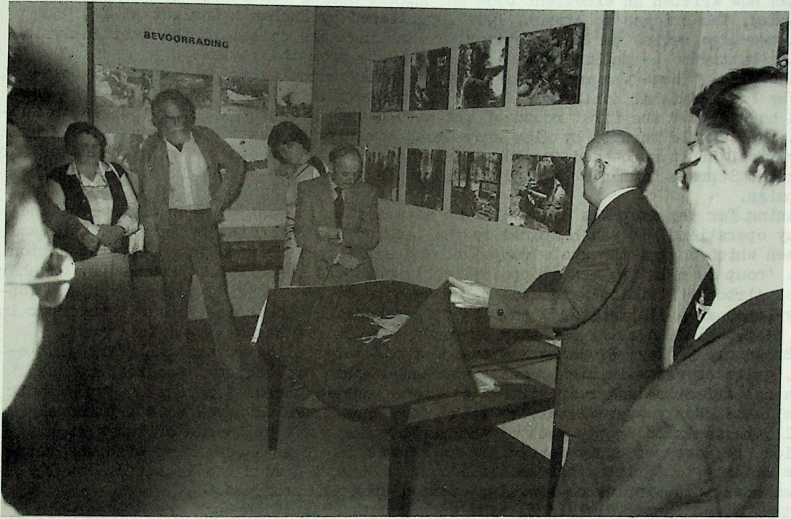
The official presentation of the new exhibition case. ( photo: B.de Reus )
Poster still available.
Forty years after the battle the artist Johan Paulus Pieters of Arnhem has expressed his imprssions and emotions in a large pastel-drawing. The composition shows the pre-war tower of the Eusebius Church, the bridge which was the target of the operation, the helmet of a dead soldier in the midst of a patch of heather and Pegasus in the clouds.
The artist has lent the original to our Society and the drawing is now on view at the Museum. A reproduction has been made and a small number is still available at the Museum. The price is Dfl 10,-. Orders by post for more than three copies only, at an extra cost of Dfl 7>50 and Dfl 8,25 conversion charges.
Souvenir stall during Airborne Walking Tour.
During the Airborne Walking Tour on 1 September our Society had a souvenir stall at Utrechtseweg, Oosterbeek. As in previous years the secretary, Mrs.M.de Langen was in charge of the organisation and souvenir articles from the Museum and of our Society were on sale, totalling Dfl 33^5i75 (!)•
Information required on 17-pounder guns.
Three 17-pounder guns from the battle are on display around the Airborne Museum. An appeal for information on these guns was already made in the last issue and although several veterans have reacted additional information is kindly requested.
New book on Market-Garden.
A few years ago under the pseudonym of Tom Angus, Colonel G.S.Powell wrote a brilliant account of his Arnhem experience as a company commander under Shan Hackett, called “Men at Arnhem”.
He has now written an excellent book on “Market-Garden” entitled “The Devil’s Birthday, The Bridges to Arnhem, 19W’, published by Buchan & Enright at £ 9-95- In a two-page review in The Spectator Max Hastings has called it the’ best analysis of the battle to be published thus far. To quote from the review:
On the plan: “Those who regard Arnhem as a wholly uncharacteristic spasm of bold- nes by Field-Marshal Montgomery forget the context in which he approved it: he knew that he had lost the first round of his battle with Eisenhower for resources to sup¬port the ‘single thrust’ by 21st Army Group towards the heart of Germany. The Arnhem operation, if it succeeded, would offer him the best, perhaps the only chance of for¬cing the Supreme Commander’s hand and regaining effective strategic control of the campaign.
Planning for the drop was hasty – seven days against almost as many months for the D-Day operations. It was hampered by the lack of understanding between soldiers and airmen which dogged the whole campaign. The air forces refused to accept the notion of a ‘coup de main’ by men dropped directly onto the objectives, as urged by Urquhart, First Airborne Division’s commander, among others. The decision to go for open Drop¬ping Zones at a distance from the objectives was the single most disastrous error in the plan, which an abler man than Brereton would never have allowed to stand”.
On Browning: ” ‘Boy’ Browning was one of those outstanding British military gentle¬men, quite numerous in high command throughout the 20th century, who inspire such personal affection and respect that it seems churlish to cast aspersions upon their intellects. Forty years later, to those upon whom Browning never wove a personal spell, he seems to embody most of the virtues and vices of Quards officers of his period. He does not carry conviction as a planner, or as a commander with the ruth¬less ability to ‘grip’ a battle. Indeed, once Market Garden was launched, Powell notes how little influence Browning exerted upon its progress.”
On the German Panzer divisions: “The author cuts sharply through the 40-year-old legend of the two unsuspected Panzer divisions at Arnhem, and the young intelligence officer whom Browning sent on sick leave after he made an unwelcome fuss about iden¬tifying tanks near the Dropping Zone. Through Ultra, 21st Army Group knew about the Panzers, However, far from being in divisional strength, they amounted to only weak brigade groups with barely 40 tanks between them. In the mood of the moment at 21st Army Group, even to those in the know they did not seem a critical menace. Montgomery and his staff should have known better, after seeing the huge difficulties that even the shattered remains of the SS Panzer formations had caused to unbroken British corps in Normandy”.
On the German reaction: “A great mistake was made in briefing the unblooded British parachute units of First Airborne Division. They were conditioned to regard their enemy lightly. Every Allied formation that had fought in Normandy knew how very, very good the Germans were, above all in defence and in quick reaction with make¬shift forces. ”
On the ground-air liaison: “Powell’s narrative provides further evidence of the extraordinarily poor ground-air liaison that still prevailed in 21st Army Group as late as the autumn of 19^4. Even when the weather enabled them to do so Allied fighter-bombers could not provide effective support for First Airborne Division for lack of Forward Air Control.. They did not even achieve effective interdiction on the approaches to the battlefield.” “Powell writes in the closing pages of his book that he has no regrets for Arnhem and knows no veteran of First Airborne who possesses them either. These are the * only sane sentiments for men who saw so many others whom they knew, or loved or commanded, die in the battle. Those of us who look back without memory, through the interval of a generation, can afford the indulgence of reflecting how much better if Arnhem had never been.”
The next Newsletter.
The next Newsletter will be published in February 1985.
Bijlage bij Nieuwsbrief No.16.
Appendix to Newsletter No.16.
40ste HERDENKING VAN DE SLAG ON ARNHEM
40th COMMEMORATION OF THE BATTLE OF ARNHEM
1944 – 1984
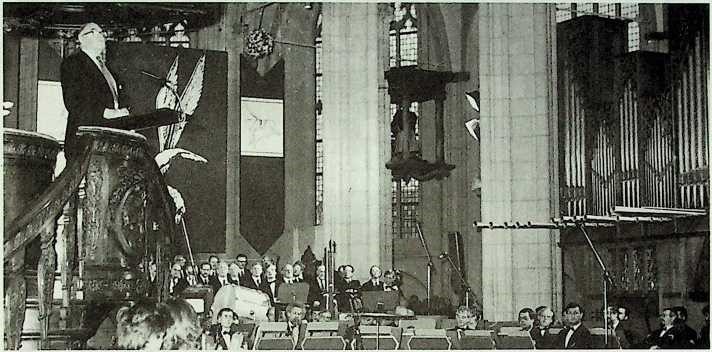
Donderdag 20 September. Generaal Urquhart houdt een toespraak in de Eusebius Kerk tijdens de Welkomstbijeenkomst voor de Arnhemveteranen.
Thursday September 20th. Address by General Urquhart in the
Eusebius Church during the Welcoming Ceremony in honour of the Arnhem Veterans.
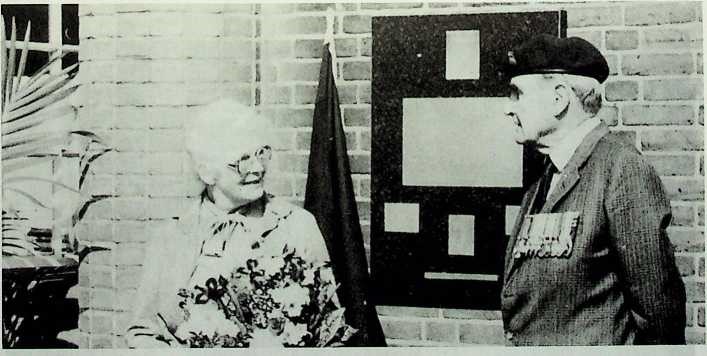
Vrijdag 21 September, Kolonel Graeme Warrack onthult een gedenksteen in de Koning Willem III kazerne in Apeldoom, die na de Slag om Arnhem fungeerde als “Airborne Military Hospital”.
Friday September 21st. Colonel Graeme Warrack unveil a memorial stone in the Koning Willem III Barracks in Apeldoom, which served as the Airborne Military Hospital after the Battle of Arnhem.
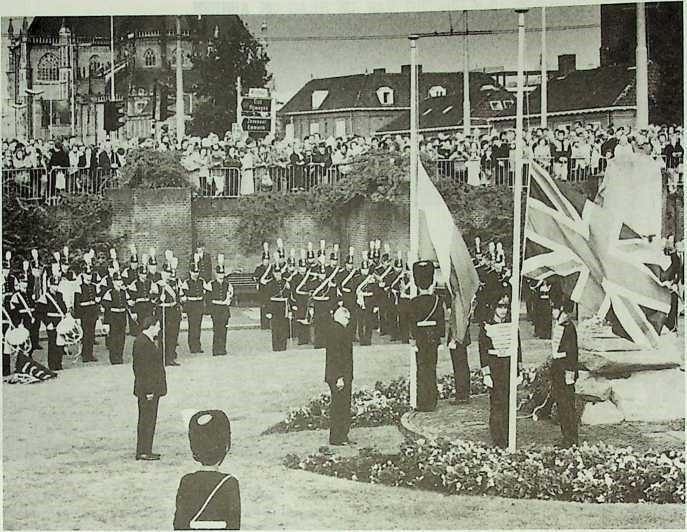
Zaterdag 22 September. Kranslegging bij het Airborne Monument bij de brug in Arnhem.
Saturday September 22nd. Wreath laying at the Airborne Monument near the bridge at Arnhem.
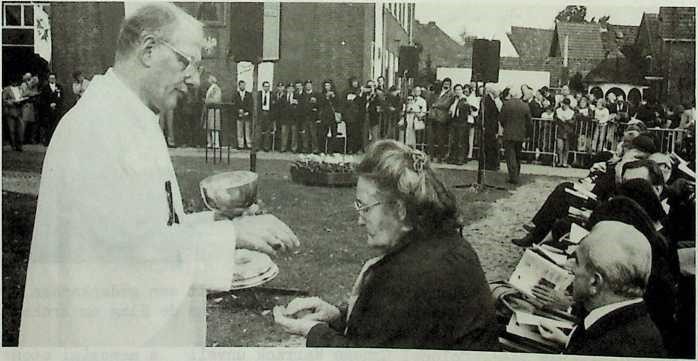
Zaterdag 22 September. Kardinaal Simonis tijdens de mis bi i ho+ p Airborne Monument in Driel. J oolse
Saturday September 22nd. Cardinal Simonis during the Holv of the Polish Airborne Monument in Driel. n J:ront
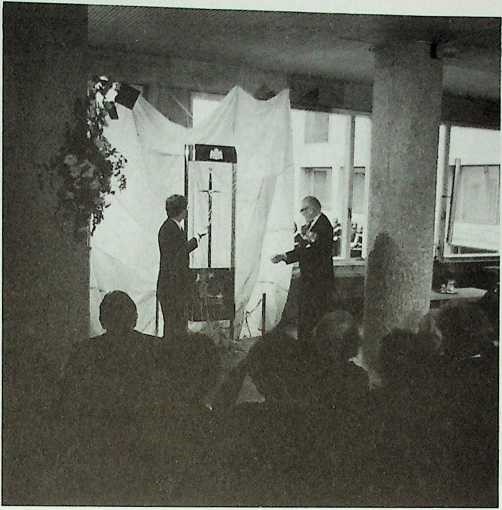
Zaterdag 22 September. Overhandiging van het “Commemorative Sword” door generaal Urquhart in het Huis d’er Provincie in Arnhem.
Saturday September 22nd. Presentation of the Commemorative Sword by General Urquhart in the House of Province in Arnhem.
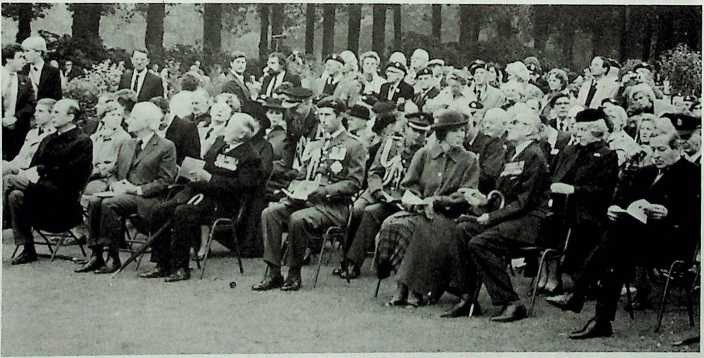
Zondag 23 September. De Herdenkingsdienst op het Airborne Kerkhof in Oosterbeek. Op de voorste rij: generaal Hackett, Prins Charles, Koningin Beatrix, generaal Urquhart en Prins Claus.
Sunday September 23rd. The Memorial Service at the Airborne Cemetery in Oosterbeek. In the foreground: General Hackett, the Prince of Wales, Queen Beatrix, General Urquhart and Prince Claus.
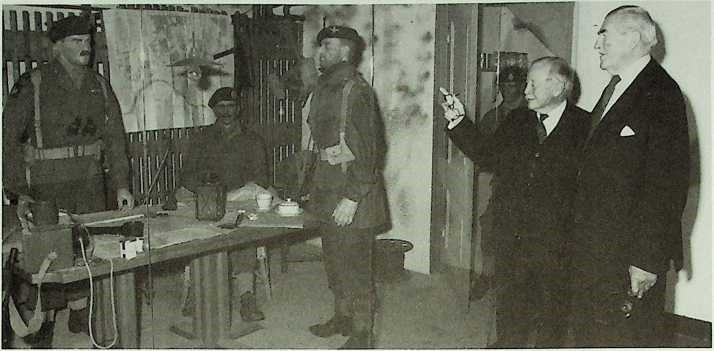
Generaal Hackett en generaal Urquhart bekijken tijdens een bezoek aan het Airborne Museum een van de diorama’s in de kelder.
General Hackett and General Urquhart look at one of the dioramas in the cellar of the Airborne Museum in Oosterbeek.
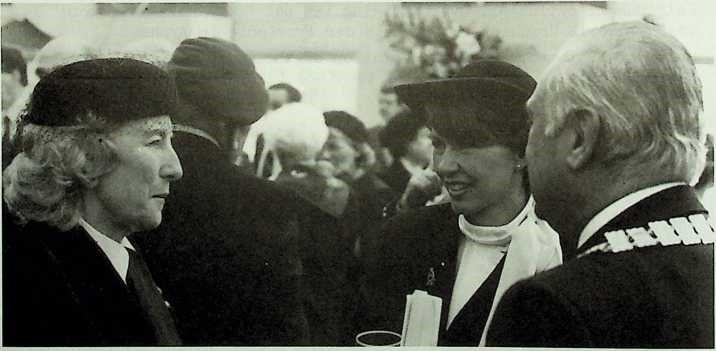
Dame Vera Lynn in gesprek met de burgemeester van Renkum en zijn vrouw.
Dame Vera Lynn talking to the burgomaster of Renkum and his wife.
Foto’s/Photographs: B.de Reus ( no.1,7,8 ), R.P.G.A.Voskuil ( no.2,3,5,6 ) Fotobureau v.Bremen, Lent ( no.4 ).

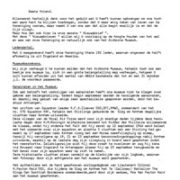
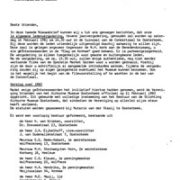
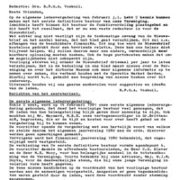
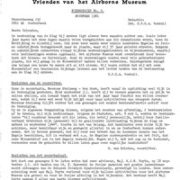
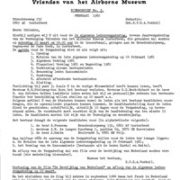
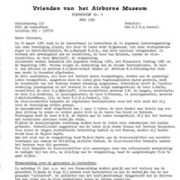
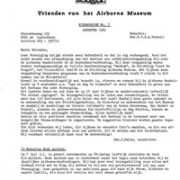
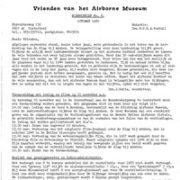
Plaats een Reactie
Vraag of reactie?Laat hier uw reactie achter.